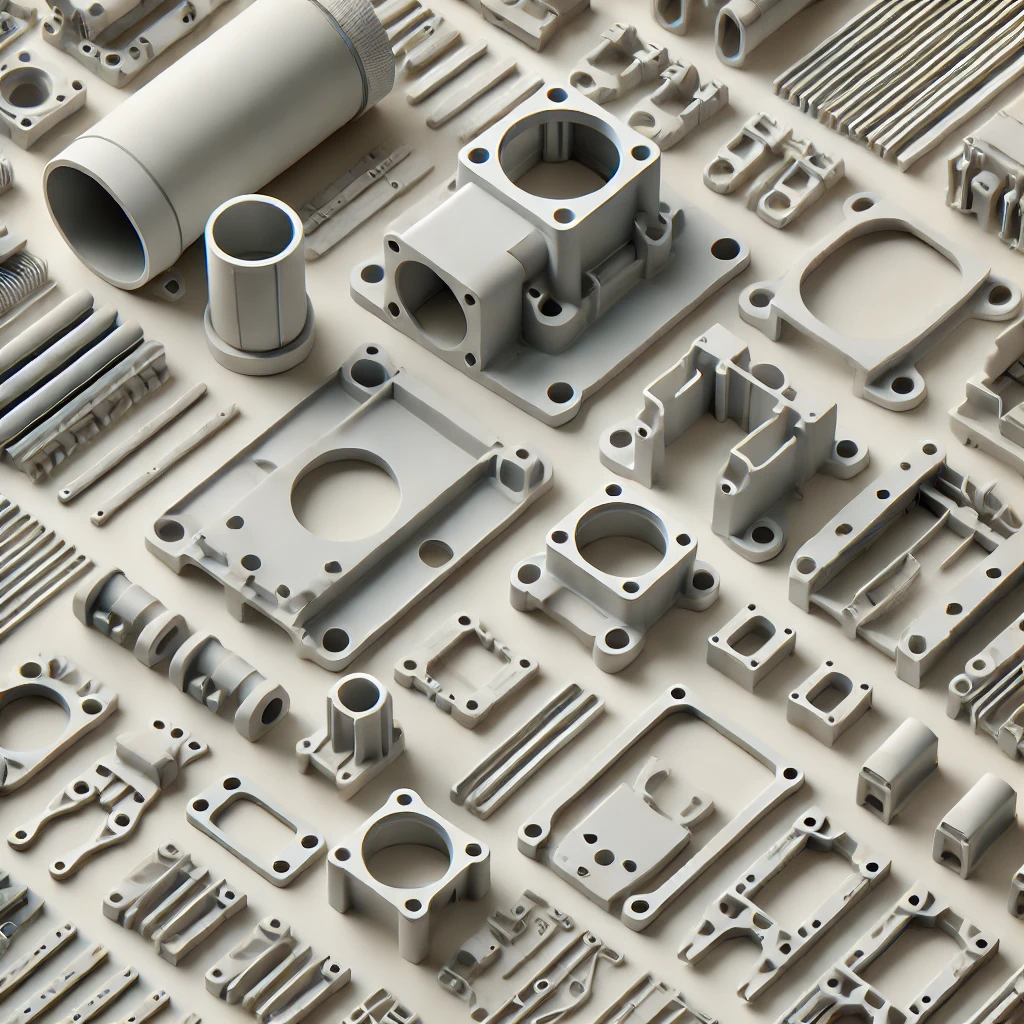CNC Machining Applications in Automotive Parts: Processes & Benefits
Explore how CNC machining powers the production of automotiv...
In the context of rapidly evolving industrial manufacturing technology, CNC (Computer Numerical Control) technology has become an indispensable pillar across various industries. In the field of plastic processing, the demand for CNC plastic parts has risen sharply, being widely used in sectors such as automotive, aerospace, electronics, and medical equipment. Compared to traditional processing methods, CNC machining offers higher precision, flexibility, and production efficiency, especially in the customization of complex parts.

CNC plastic parts are high-precision plastic components processed using CNC technology. Unlike traditional plastic molding methods, CNC machining can achieve more complex geometries while maintaining extremely high accuracy, with tolerances often controlled within microns. Common CNC-machined plastic materials include:
- ABS (Acrylonitrile Butadiene Styrene)
- PVC (Polyvinyl Chloride)
- POM (Polyoxymethylene)
- Nylon
- PEEK (Polyether Ether Ketone)
- Polycarbonate
Here is a comparison of the properties of several common CNC-machined plastic materials to help users choose the right material based on specific needs:
Nylon Excellent

Compared to traditional plastic processing technologies, such as injection molding or thermoforming, CNC plastic parts have the following significant advantages:
3.1 High Precision
One of the highlights of CNC machining is its high precision, typically reaching 0.01mm or even better. This precision is critical for industries like medical devices, aerospace, and electronics, where tight tolerances are required.
3.2 Strong Flexibility
CNC machining does not rely on molds, allowing it to quickly adapt to design changes and produce parts of various specifications. This makes CNC technology more cost-effective than traditional mold-based manufacturing for small to medium production runs or customized products.
3.3 Compatibility with Various Materials
CNC machines can process a wide range of plastic materials, from common ABS to high-performance engineering plastics like PEEK. This versatility meets the needs of different applications, especially in fields requiring high-temperature resistance or chemical corrosion resistance.
3.4 Reduced Mold Costs
Traditional plastic mold manufacturing can be expensive, especially when frequent design changes require mold remaking. CNC machining eliminates the need for molds, significantly reducing the initial investment for small production runs.
3.5 Shorter Production Cycle
CNC machining offers fast turnaround times, with the ability to go from design to finished product in just a few hours or days, making it ideal for rapid prototyping and small-batch production.
Due to their high precision, flexibility, and material diversity, CNC plastic parts are widely used across various industries:
4.1 Automotive Industry
In automotive manufacturing, lightweight and high-strength CNC plastic parts are often used in the production of dashboards, engine covers, and body accessories. These parts reduce the vehicle's weight, improve fuel efficiency, and have a long service life.
4.2 Aerospace
Aerospace demands lightweight materials and high precision. CNC plastic parts are used in the production of electronic device housings and internal structural components. The high precision of CNC ensures the reliability of these parts in harsh environments.
4.3 Medical Equipment
The medical industry demands high precision and specific material properties. CNC plastic parts are often used in surgical instruments and medical device housings. High-performance plastics like PEEK, which are biocompatible, are especially suitable for medical-grade applications.
4.4 Electronics and Communication Devices
CNC plastic parts are widely used in electronics for housings, connectors, and heat dissipation components. The excellent insulating properties and lightweight nature of plastics make them ideal for devices such as mobile phones and computers.
Despite its many advantages, CNC plastic machining can be influenced by several factors:
5.1 Material Properties
Different plastics vary in hardness, toughness, and heat resistance, which affect machining speed and tool choice. For example, polycarbonate is harder and requires slower machining speeds, while nylon is more flexible and prone to deformation during processing.
5.2 Tool Selection
The type of tool directly affects machining quality and efficiency. Carbide tools are suitable for cutting harder materials, while high-speed steel tools work better for softer plastics.
5.3 Cooling and Lubrication
High friction during plastic machining can generate significant heat, causing deformation or softening. Therefore, appropriate cooling fluids or lubricants help control temperature and ensure part accuracy.
As CNC technology advances, the future of CNC plastic machining is trending toward greater intelligence and environmental sustainability.
6.1 Smart Manufacturing
The integration of IoT and AI will drive the intelligent upgrade of CNC machining. Real-time monitoring of temperature, vibration, and other data during the machining process will further enhance precision and reduce scrap rates.
6.2 Use of Eco-Friendly Materials
With increasing attention to plastic pollution, CNC plastic machining will place more emphasis on using eco-friendly materials, such as biodegradable or recyclable plastics, to reduce environmental impact.
6.3 Combination with Additive Manufacturing
The combination of additive manufacturing (such as 3D printing) and CNC machining is expected to become an important trend in future manufacturing. By 3D printing the initial shape of plastic parts and then using CNC for finishing, efficiency and precision can be further improved.
CNC plastic parts play a critical role in modern manufacturing. They not only meet the demands for complex shapes and high precision but also offer high flexibility, short production cycles, and a wide range of material options. With continuous advancements in technology, CNC plastic machining applications will continue to expand, driving industries toward greater efficiency and sustainability.
Explore how CNC machining powers the production of automotiv...
Discover how high-precision CNC machining enables ultra-accu...
Explore how CNC machining technology, through high precision...
Learn about the different types of metal plating processes, ...
Surface treatment technologies are integral to improving mat...

Copyright © 2024 Shenzhen Xunchuangda Precision Technology Co., Ltd. ALL Rights Reserved




